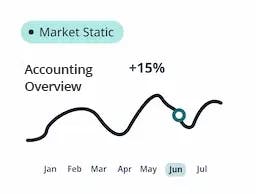
Morgan
2025-07-24

In Saudi Arabia, paperwork isn’t just going paperless, day by day, it’s getting smarter. The word “Invoice” has taken on a whole new meaning now, and what used to be a printed invoice is turning into something far more structured, secure, and legally binding.
Yeah, you got it right, we’re talking about E invoicing, or as it is locally called, Fatoora. If you’re operating a business in KSA and you’re VAT-registered, there are chances that you’ve already heard the term.
But hearing about it and actually knowing how it works are two different things. This entire shift to digital invoicing sounds so simple on the surface. But once you dig in, the details are a whole different game.
So, let’s take one step with us, Peniel Computer, at a time. Here&pos;s everything you actually need to know about e-Invoicing in Saudi Arabia.
What is E-Invoicing?
We can say it’s basically a way of issuing and storing invoices digitally in a format that complies with the standards laid down by ZATCA (Zakat, Tax and Customs Authority).
That means your invoices need to be:
- Structured (in a specific XML format)
- Secure (digitally stamped and traceable)
- Standardized (so they all follow the same rules)
- Connected (either sent to ZATCA at the exact time or ready for submission)
Remember, it’s not about emailing a PDF to your customer anymore. That won’t cut it. These invoices need to be generated from a compliant software system that meets ZATCA’s technical specs.
In short, you still need to do invoicing, just not the way you’re used to.
Why This Matters
In case you are running a small business in KSA and thinking, “Okay, this sounds like something only big enterprises need to worry about,” then you’re wrong. It really doesn’t matter if you’re running a large company, a mid-sized firm, or a small local shop. If you’re registered for VAT, you’re already a part of this.
It’s salient to understand that the goal here isn’t just digital convenience; it’s way bigger than that.
ZATCA is using E invoicing to:
- Improve VAT compliance.
- Minimize fraud.
- Cut down on tax evasion.
- Track transactions more efficiently.
- Build a connected digital economy in line with Vision 2030.
Once your system is fully integrated with it, even audits and VAT filing will get easier.
Two Types of Invoices You Should Know About
Your invoices will mainly fall into one of the following two buckets, depending on how you operate.
*NOTE: These two are the frequently used invoices in KSA.
- Standard Tax Invoice
This is mostly used for B2B (Business to Business) or B2G (Business to Government) transactions.
These types of invoices include:
- Both buyer and seller details, including their VAT registration number.
- Number and date of invoice.
- Detailed line items
- VAT rate & amount
- Cryptographic stamps and UID
- Simplified Tax Invoice
This is mostly issued in B2C environments. For example, if you’re running a grocery then you’ll issue a B2C invoice.
It includes:
- Basic seller information (name, address, and VAT registration number).
- Invoice date
- Description of goods/services.
- Total amount including VAT.
Phase 1 & Phase 2
This e-Invoicing in Saudi Arabia didn’t just happen overnight. ZATCA planned it out in two main phases.
Phase 1: The Generation Phase
It became effective from December 2021.
The focus here was simple: make businesses stop issuing manual or unstructured invoices.
In this phase:
- You need to use compliant software to generate invoices.
- The invoice format must be structured.
- For simplified invoices, QR codes were a must.
- But no real-time integration with ZATCA was required, at least in this phase.
You can think of this phase as setting the foundation, where your system must be ready and clean.
Phase 2: The Integration Phase
Phase 2 was implemented on 2023 January 1. In this phase, things started to get technical.
In this phase:
- You must integrate your invoicing system with ZATCA’s Fatoora platform.
- Send your standard invoices to ZATCA and get clearance before sharing the invoice with your buyer.
The invoice must include technical elements like:
- Cryptographic stamping.
- UIDs
- Digital signatures
And no, it’s not optional anymore. If your business has been selected for any wave, you must comply within 6 months of being notified.
Technical Stuff
Well, you don’t need to become a software engineer to understand this part, yet you must know what your invoicing software should handle.
Here’s what your system must do:
- Generate XML invoices in line with ZATCA’s data structure.
- Apply a cryptographic stamp to protect data integrity.
- Include QR codes and UIDs.
- Allow batch submission to ZATCA’s system.
- Be able to store invoices in case of audits.
If your current software can’t manage all of these, then it’s time to upgrade; not tomorrow, but today.
What Happens If You Don’t Comply?
Non-compliance with ZATCA isn’t only risky, it’s also expensive.
ZATCA can take action, including:
- Financial penalties up to SAR 50,000.
- Suspension of taxpayer services.
- VAT return rejection.
- Blacklisting in ZATCA’s records.
- Legal enforcement audits
To be honest, it’s no more about what if they’ll find out. Trust me, with this current system, they already know.
What Businesses Should Be Doing Right Now
No matter whether you’re in phase 1 or moving to phase 2, here’s what you should be doing:
- Verify if you’re in the next wave.
- Check your ZATCA portal or official communication.
- Evaluate your current accounting software.
- Find out if it can generate and transmit compliant e-invoices or not.
- Choose a local software provider who will understand KSA compliance.
- Remember, this isn’t the time for generic invoicing tools.
- Run several internal tests.
- This is the time you must ensure everything works in a sandbox environment.
- Most importantly, get your entire team trained.
- Secure your infrastructure.
Never forget, you are storing legally binding tax documents.
Right now, you can see e-Invoicing as a hassle because of new terms, new tools, and extra steps. But once you implement it properly, something surprising happens: your workflow gets better.
Now you can notice:
- Fewer mistakes
- Clean digital records
- Faster VAT returns
- Always audit-readiness
This indicates, the earlier you adapt, the smoother your transition will be, and once it’s running, it takes the pressure off your accounting team too.
Looking for Help with E invoicing in Saudi Arabia?
If you went through the entire website and are still unsure where to begin or if your current system feels outdated, don’t worry, we’re here to help you.
At Peniel Computer, we work closely with businesses across Saudi Arabia to implement accounting software that contains ZATCA-compliant invoicing solutions, including software setup, integration, and user training.
Besides selling software, we make sure it works for your business, in line with KSA’s evolving tax regulations.
So, reach out to us at www.penielcomputer.com and let’s make compliance stress-free.
Latest News
From Our blog and Event fanpage




